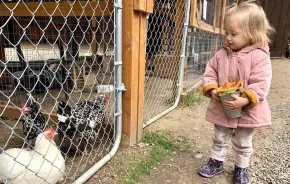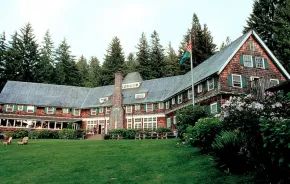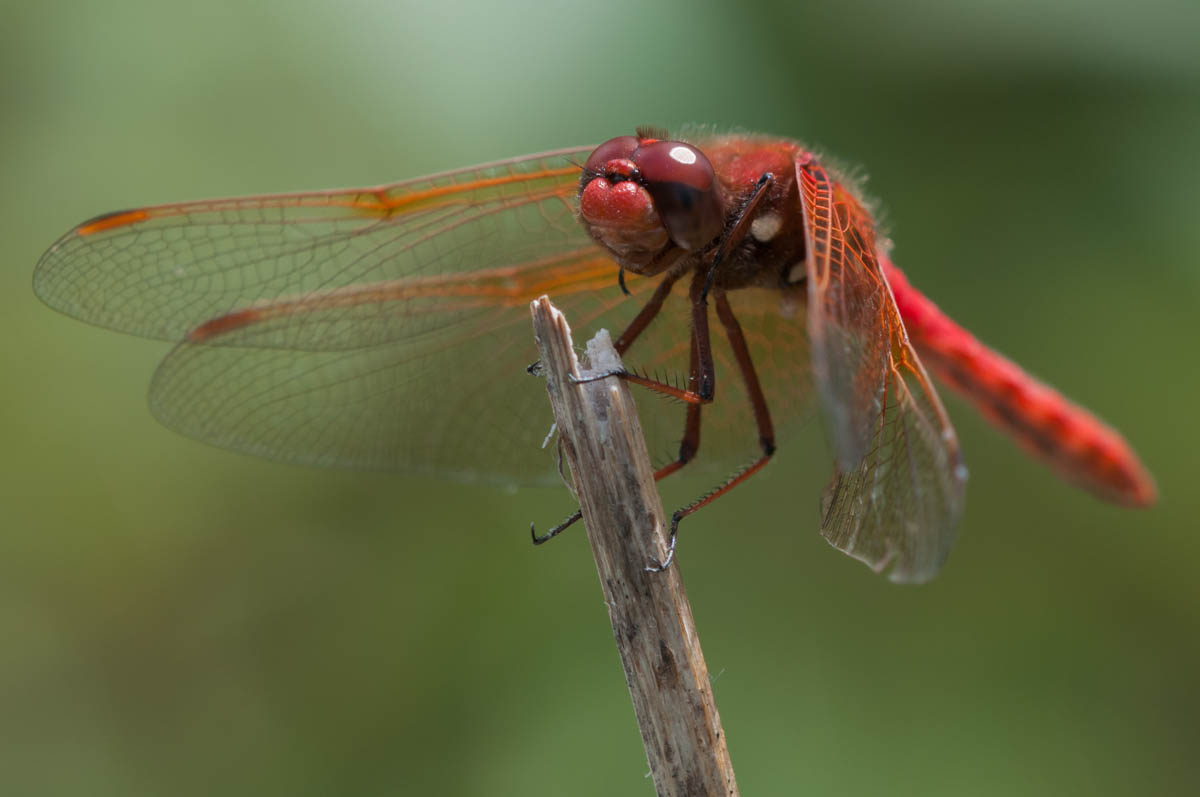
Did you know you can find dragons right here in Washington state? They fly and are fierce and have red or green bodies, just like you’ve heard. But these dragons don’t breathe fire, and they’re only a few inches long. They are dragonflies, whose lineage dates from 325 million years ago.
Hunting for dragonflies during a Puget Sound summer is a fun way to get kids outside experiencing the magic of our local wetlands. Here are some fun facts to share about them before you start looking:
If you are quick enough to grab a dragon out of the air — and you must be very quick — you would see a long, slender body, in most cases brightly colored with reds, blues, yellows or greens. You'd see four wings in two pairs between your fingers, mostly clear but sometimes with splashes of translucent color. Each of a dragonfly's four wings can move independently of one another, allowing dragons unrivaled flight and the ability to hover as well as move forward, up, down, sideways and even backwards.
Kids might be most interested in how dragons hunt. When after prey, a dragonfly holds its six legs together like a basket and scoops prey up. Its giant eyes, which take up most of its head, provide 360-degree stereo vision — the best in the insect world. For many insects, from mosquitoes to butterflies, a view of the dragonfly's fierce face is their last before they’re devoured.
Dragonflies have a secret life. Unseen, under the water that adult dragonflies cruise over, live larvae that are dropped there as eggs. The squat, brown and unassuming dragonfly larvae live longer underwater than adult dragonflies live above — in some species, that’s up to five years submerged.
Larvae are also predators and will catch tadpoles, fish, insects and even other dragonfly larvae with a hinged jaw that sits folded up like a lawn chair under their chin — until it shoots out to ensnare prey. When larvae want to move quickly, they blast water out of their bottom and scoot away.
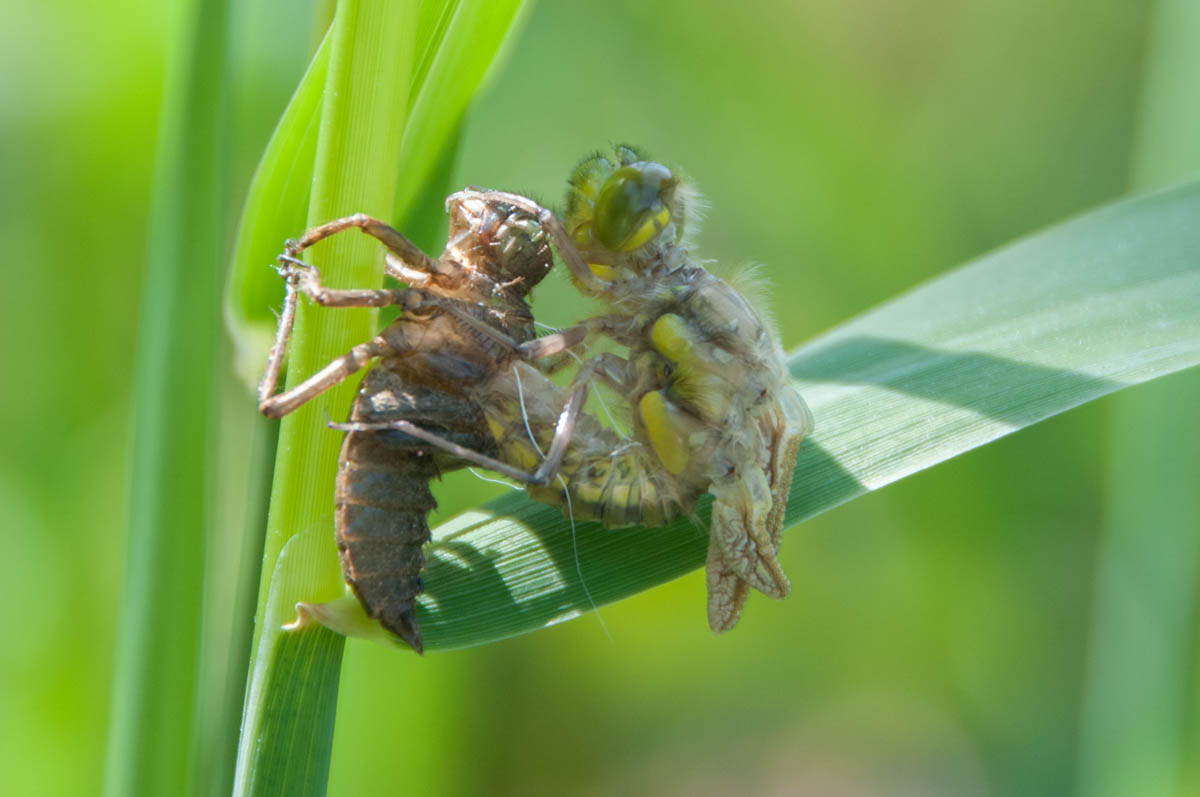
When it's time to transform to an adult, the larva climbs up a reed in the dark of night and its back splits open. The dragonfly heaves itself out of the larva skin, freeing the legs to grab the reed and pulling the abdomen free. There the soft dragon sits, pumping fluid into its body and wings until they start to fill in and harden, and they can fly. (Watch a clip of the emergence from David Attenborough’s Conquest of the Skies.)
Dragons are easy to find. Any pond with aquatic plants will have some soaring around. The best months to spot them are July and August, but some start flying as early as May and continue as late as October. Go on a sunny afternoon; dragonflies rely on the sun to warm their flight muscles and usually aren’t active until late morning.
On your hunt, consider taking binoculars for spotting faraway dragons, and a magnifying glass to get close-up views of those who land.
Dragonfly species to spot around Puget Sound
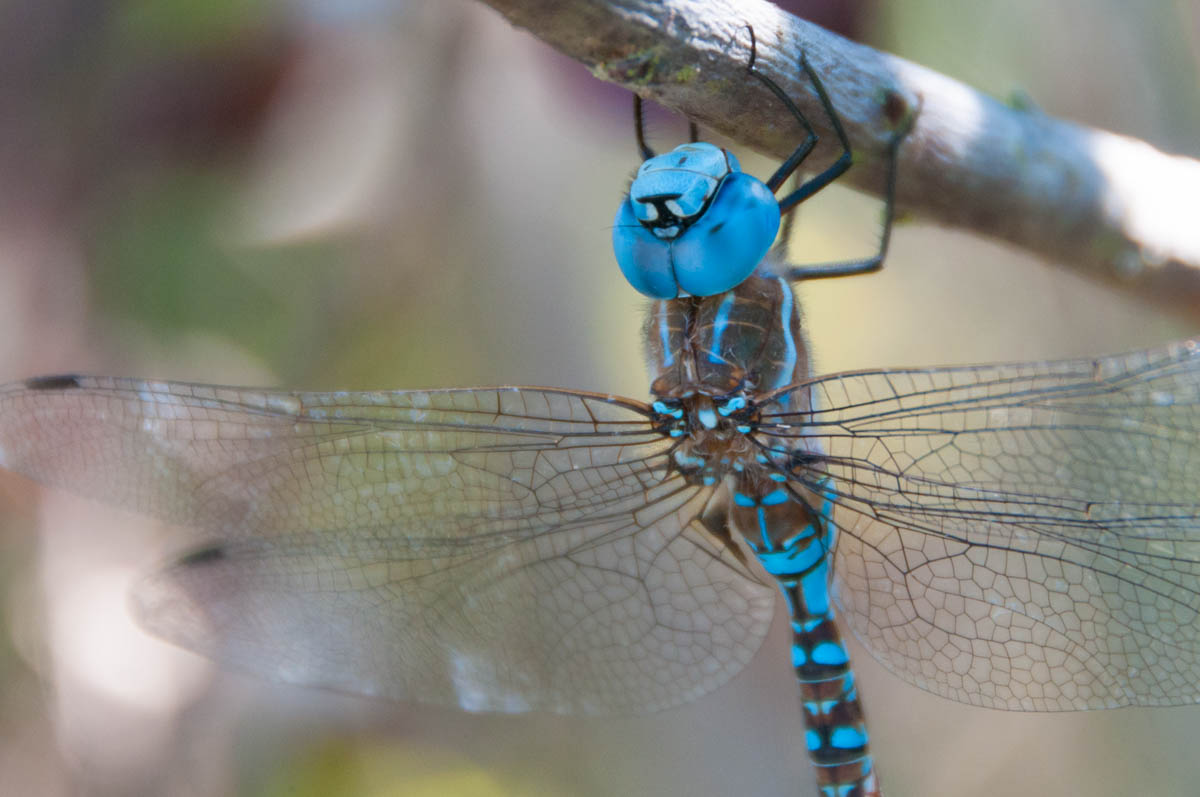
Cardinal meadowhawk: This bright red dragonfly hawks prey, meaning it sits on a perch and waits for insects to pass by before flying after it.
Eight-spotted skimmer: This dragonfly’s blue body has alternating black-and-white spots on its wings. Count the black spots — two on each wing, eight in total. If there are three spots per wing, it’s a 12-spotted skimmer.
Western pondhawk and blue dasher: If you see an all-blue dragonfly, look closely at the face. A green face and blue eyes means it’s a western pondhawk, but a white face and green eyes makes it a blue dasher. To further distinguish the species, the female blue dasher has a black and yellow body and the female western pondhawk is entirely green.
Darners: If you see large dragons patrolling the ponds, circling around and chasing anything that flies, these are the darners; they rarely land. Look for the common green darner with a green thorax and blue abdomen or the blue-eyed darner, with a blue and brown/black body.
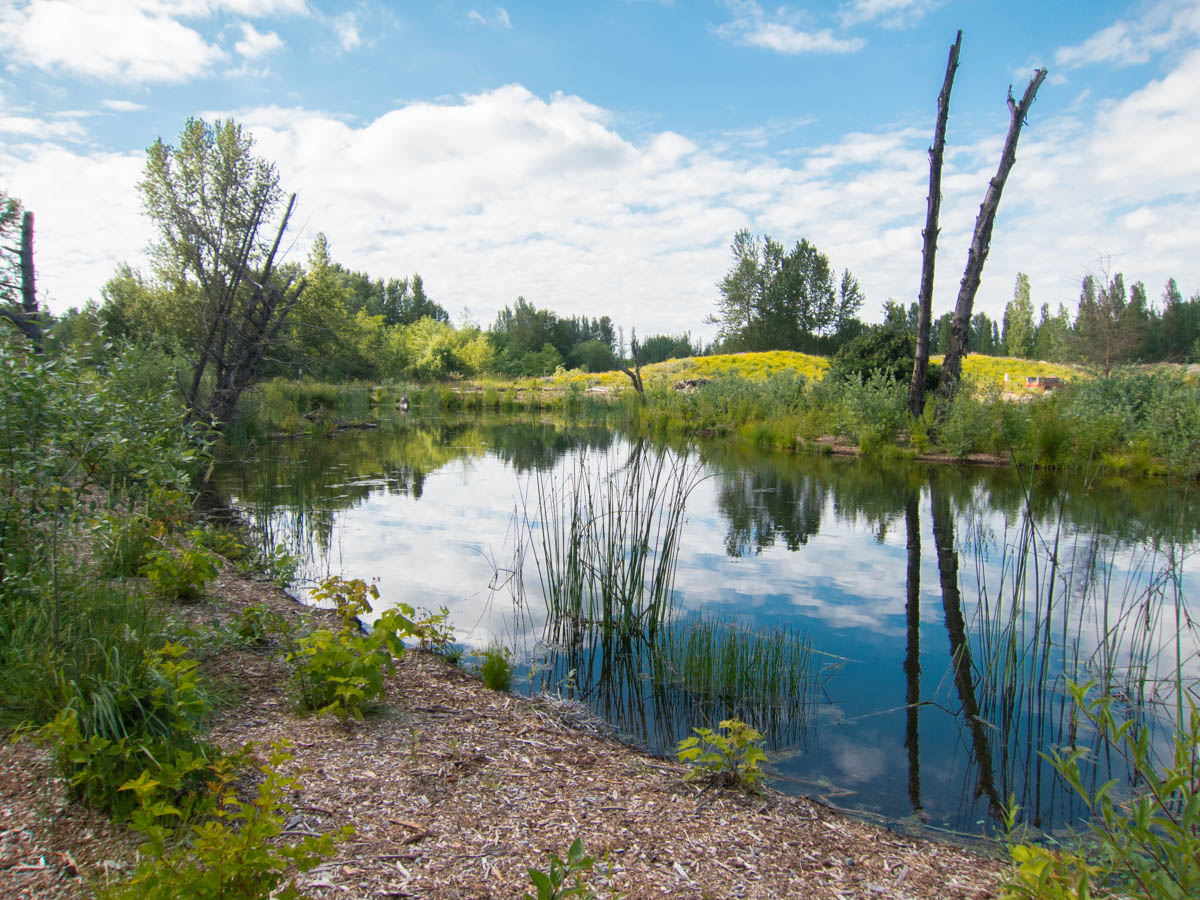
6 parks to hunt dragonflies
Magnuson Park wetlands, Seattle
In a park that has something for everyone, the reconstructed wetlands are one of the best places to find dragonflies. Try the recently constructed pond on the east side of Lake Shore Drive near the boat launch.
Fun fact: The merlin, a small raptor that is one of the dragonfly’s top predators, one of the few birds that can catch a dragonfly in flight.
Kubota Garden, Seattle
Wander the meandering paths through this 20-acre garden in Rainier Valley that blends traditional Japanese design and Pacific Northwest plants to find the many ponds tucked away throughout the park.
Fun fact: If you’re lucky, you may see two dragonflies mating, either perched or flying together. When they are mating they create a wheel; the male is the one grabbing the female behind her head. This is one of the few times darners will land.
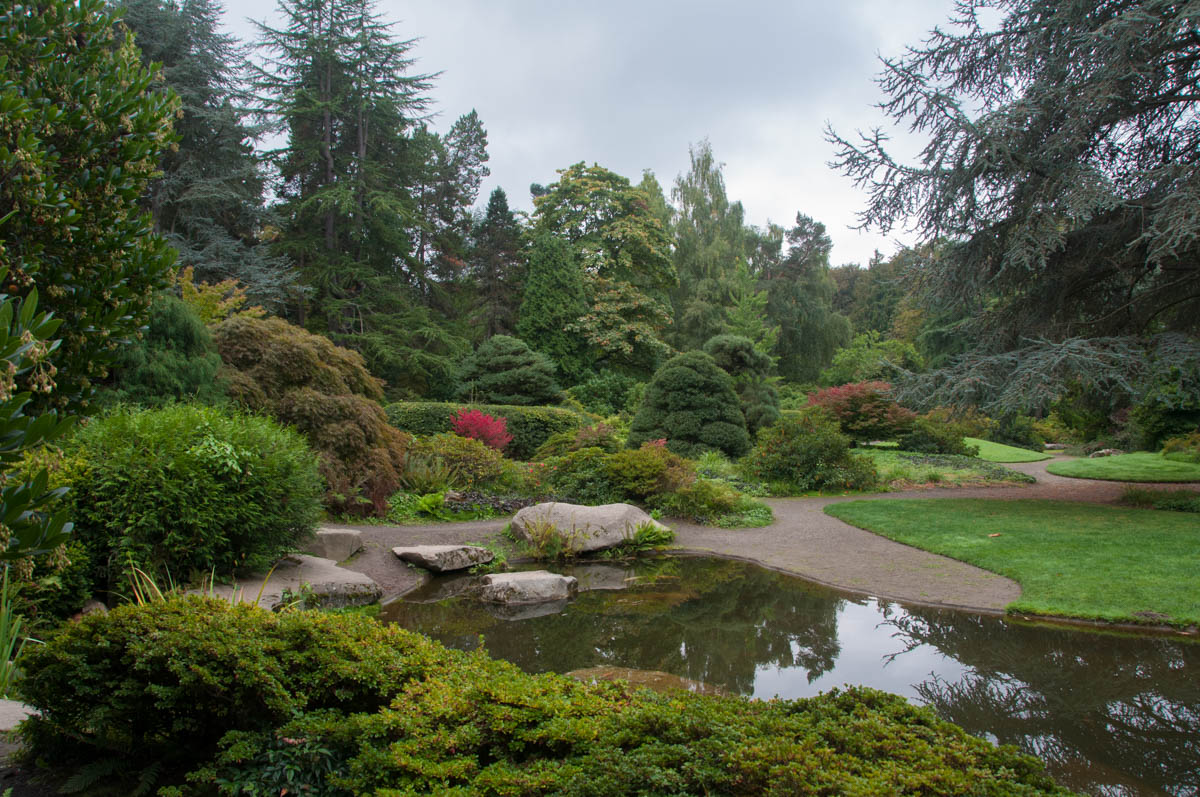
Washington Park Arboretum, Seattle
Amid the vast 230 acres of the arboretum are three ponds, two of them along Azalea way, the main spine of the park. At the southern end of Azalea way, near Lake Washington Blvd., is the largest and most promising pond to find dragons.
Fun fact: Also keep an eye out for damsels — dragonflies’ smaller, daintier cousins, which perch with their wings closed. If you’re patient and sit on the edge of the water, they may land on you.
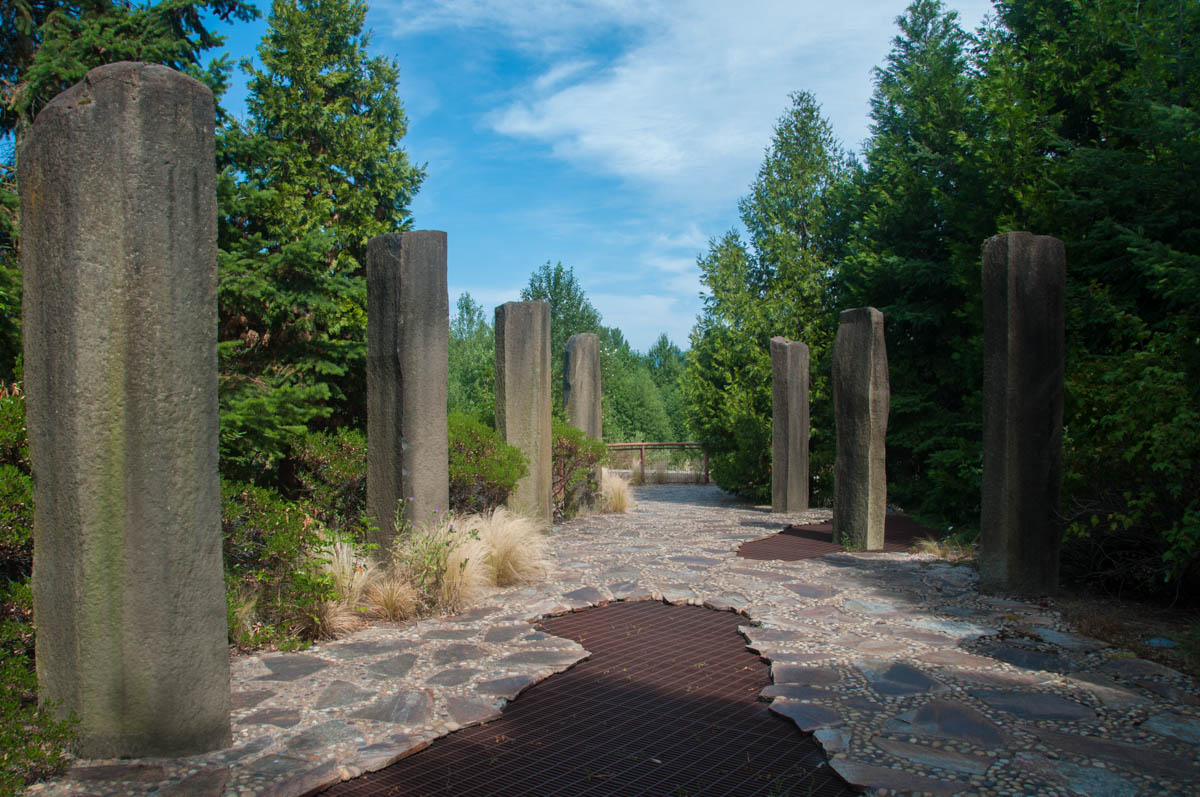
Waterworks Garden, Renton
At this little-known public park managed by King County’s south treatment plant, follow a series of ponds running downhill that manage and clean the stormwater runoff from the facility’s 50 acres. The smaller ponds dry up in the middle of summer, so look for the larger ones that still attract many dragonflies. (Tip: Parking is limited, there is some street parking along Monster Road S.W. just south of Oaksdale Avenue S.W., or at Oaksdale and Monster Road.)
Fun fact: Exuvia — the larvae skin — can be found on reeds and grasses growing along the edges of the water anywhere you find dragonflies.
Mercer Slough Nature Park, Bellevue
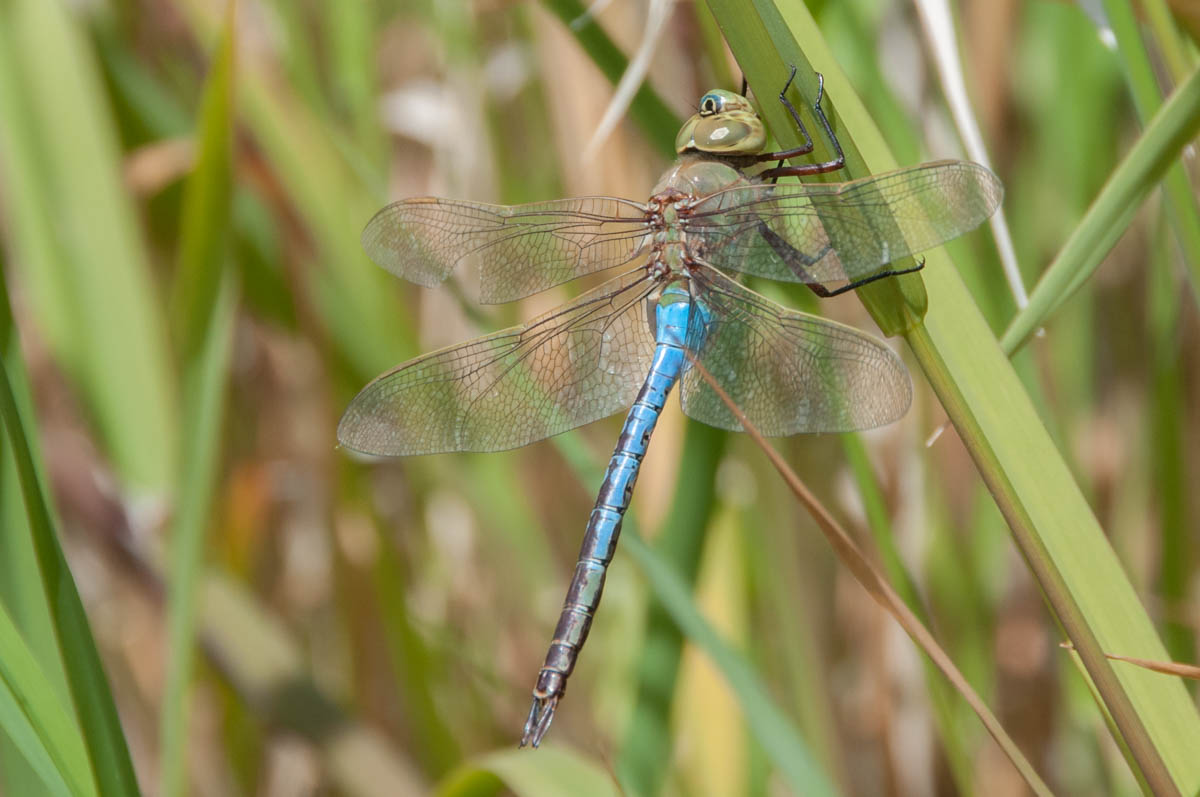
Wedged between Beaux Arts Village and I-405, the trails in this park feel peaceful, a respite from the city. Take a walk along the loop around the blueberry farm which will lead you along the slough. Stop at the bridge for a view of the slough in the foreground and Bellevue’s downtown in the distance. Keep an eye out for dragonflies patrolling along the slow-moving water. Tip: Park at the Winters House Visitor Center, 2102 Bellevue Way S.E.
Tip: For an even closer look at dragonflies, try renting a kayak from Cascade Paddlesports or taking your own and paddling along the slough.
Hazel Wolf Wetlands, Sammamish
A pristine and critical wetland habitat, this 116-acre park owned by Forterra is an oasis among the suburbs. Ann’s Walking Trail is a 1.7 mile loop around the wetlands leading over a boardwalk and to viewing platforms. Note: Dogs are not permitted on Ann’s Walking Trail.
Fun fact: On hot days, watch dragonflies perch with their abdomen straight up in the air, angled towards the sun. This is called the obelisk posture and it prevents the sun from directly hitting their body.
Dragonfly reads
Younger kids may enjoy the book Are You a Dragonfly? (Backyard Books), by Judy Allen with illustrations by Tudor Humphries. Older kids may be inspired by the images in A Dazzle of Dragonflies by Forrest L. Mitchell and James L. Lasswell.








